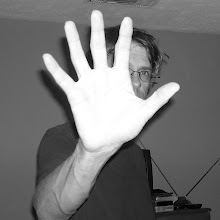In the spring of 1993, while attending a graduate school at
Southern Methodist University in Dallas, I met an undergrad named Eric who was
showing episodes of Twin Peaks every
week to a group of about twenty classmates, most of whom had never seen the series.
When I first heard about this I was thrilled. Twenty people?
All new to the world of Twin Peaks? Great!
I thought this type of “group watching” had died when the series was canceled.
(Remember, in 1993 watching Twin Peaks
was no easy task; you had to have home-recorded videotapes of the series in
order to see the whole thing properly). Thanks to Eric (a big Twin Peaks fan who knew his fellow
classmates would also enjoy the show), a weekly Twin Peaks party was alive and kicking.
Naturally, I had to check this out for myself.
Eric told me that the group was about to watch episode
14—the famous “Bob kills Madeleine” episode. Very soon they would all discover
who killed Laura Palmer. I didn’t want to miss watching this with them because
I realized I had a unique opportunity to see and hear how all these first-time
viewers would react to one the series’ most important episodes. I remembered
how stunned I was by the revelations in this episode, and by the brutal murder
of Madeleine, and I wondered how these new viewers would react. With this in
mind, I arrived at Eric’s early enough to get a seat with a good vantage point
from which to observe the audience.
Soon the room was crowded and Eric popped the tape into the
VCR. The twenty or so people in attendance had a good time with the program
during the show’s first half hour; the various subplots involving Andy and
Lucy, the vegetated Leo, and the super-strong Nadine Hurley all brought laughs.
But things got real quiet as the showed entered its final
twenty minutes. The Log Lady delivered a cryptic message, Sarah Palmer crawled
down the stairs and saw a white horse, Leland Palmer calmly adjusted his tie in
the mirror. And then Bob’s face appeared in place of Leland’s reflection.
A couple of people jumped, and then the room went still. As
Bob turned to attack Madelaine, the audience was silent and unmoving; everyone’s
eyes were locked on the screen. The scene played itself out: Bob/Leland beat
Maddy to death while the Giant stonily informed Cooper, “It is happening again.”
Then the show was over.
And still the room was quiet as each person processed what
he or she saw. But the questions began soon after: “Is Madeleine really dead?”
“How much of the story is left?” “Did
Leland really kill Laura?”
As everyone threw questions around I realized how different
their watching experience had been compared to mine when I first saw this
episode. None of these viewers had been exposed to the pre-show hype originally
surrounding the episode. They didn’t know that Laura’s killer was going to be
revealed in this segment. They came to it cold. I, on the other hand, had seen
all the commercials and read the TV Guide
blurbs back in November of 1990. I knew the importance of the episode going in.
(Even with that knowledge, however, I was still stunned.) But these people had
no preparation for what it contained. Clearly shocked, most of them still weren’t
sure what they had just seen.
Lots of discussion followed the episode. These people were
excited by Twin Peaks and couldn’t
wait to see more. They reminded me of how much I enjoyed Twin Peaks and how involved I became in the story. And here, three
years later, was a room full of people experiencing it for the first time.
Eric had done a great thing. He gathered together friends
and classmates who had never seen Twin
Peaks and introduced them to it episode-by-episode. Every person at Eric’s
party had the unique opportunity to experience Twin Peaks on a weekly basis, just like it was originally
broadcast.
I wonder now, 23 years later, if many people take the time
or effort to experience Twin Peaks
slowly.
They should. Because Twin
Peaks requires time to process. It needs to steep in the minds of viewers. That’s
why I’m so glad that the new Twin Peaks
will appear weekly on Showtime in 2017 (fingers crossed); the new story needs to
unfold through measured doses. And we at home need time to think about what we’ve
seen, to re-watch if necessary, and to properly prepare for the next
installment.
This summer I watched the entire five seasons of Breaking Bad over the course of about
three months. It was a thrilling, engrossing experience. But in watching it so
quickly, I did not always take the time to fully appreciate the artistry and nuance of
the show. As I watched, I wished I had originally seen the series on a
week-by-week, season-by-season basis. There was so much to think about, to
absorb and to study. In fact, as I approached the end of the series I did slow down, taking many days (and sometimes a week) between installments.
It is good to be reminded of this—that some stories work
better when we experience them slowly, in chapters. And it is good to be reminded that
the spaces between those chapters are important, for it is in these times that
we contemplate and discuss what we’ve seen. These spaces are almost as valuable
as the chapters themselves.
Think about it.
(A much different version of this article appeared as an editorial in Wrapped in Plastic #5, June, 1993.)











